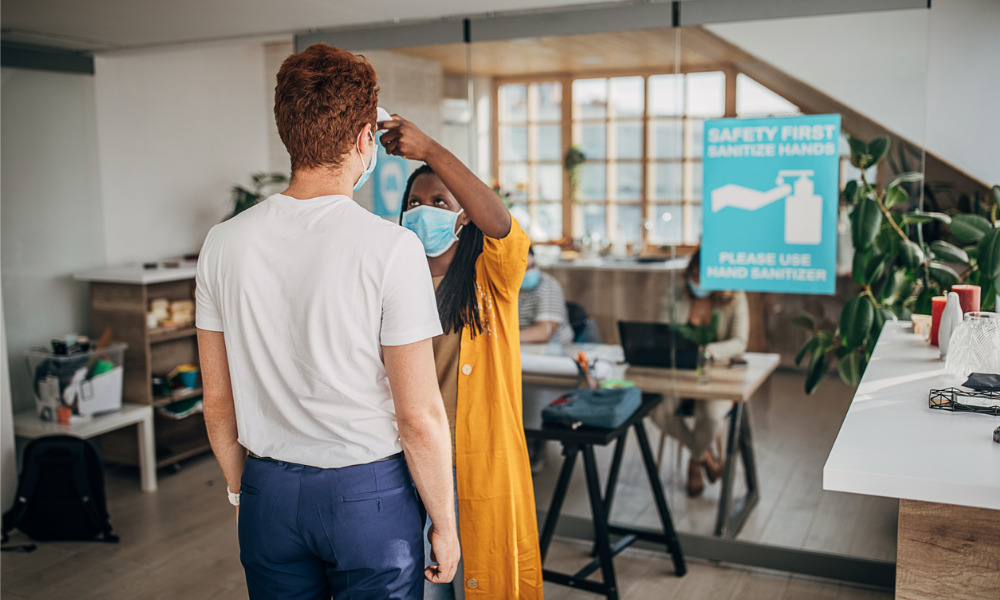
With Covid numbers low, employers are bringing workers back into the office

Employers are beginning to urge their workers back to the office after minimal community transmission in both NSW and Victoria.
The Christmas COVID-19 clusters which began in Sydney’s Northern Beaches region put many return to work strategies on hold throughout January.
But now, state premiers are urging businesses to return to offices in a bid to boost foot traffic and economic activity within city centres.
Before last week’s case linked to the Melbourne Open quarantine facility, Victorian Premier Daniel Andrews had announced that capacity for both private and public sector workplaces would increase to 75% from Monday.
Those plans are now on pause after Andrews reinstated restrictions, including mask-wearing indoors and a cap of 15 people per gathering.
Going forward, research shows the desire for flexibility is going to be a key battleground issue between employers and staff.
A Roy Morgan poll commissioned by the City of Melbourne found 75% of city workers were reluctant to go back into the office.
So how can HR leaders navigate the balance between employees’ wants and business needs?
HRD spoke to Brooke Adams, head of HR at tech consulting firm Slalom, about how her team is preparing employees to return to the office.
What makes Slalom more unusual is that after entering the Australian market in January last year, the majority of staff have never worked face-to-face before.
“It’s essentially the first entry because most people have never actually been in a Slalom office before,” she said.
“So for us, it’s really about intentionally defining our vision of the reimagined workplace, making sure that our culture and our people are at the centre of everything we do.”
Read more: COVID-19: Should vaccine be mandatory in these sectors?
HR teams across the country now have an added layer of responsibility when it comes to health and safety.
They must ensure the office is complying with state-specific Covid-safe regulations and consider factors like adequate space for social distancing to keep staff safe.
When designing Slalom’s return to work strategy, Adams said they started by surveying staff and business leaders to get a feel for the overall needs from each group.
The survey gave the HR team an idea of what percentage of the workforce wanted to return, for how many days, and highlighted the biggest areas of anxieties about being in an office.
“The vast majority of people said they wanted to come back in two to three days a week which we thought was a really positive response,” Adams said.
With the majority of staff having worked together virtually since early last year, one unique anxiety HR had to address was the prospect of meeting each other in person.
Towards the end of last year, team leaders organised various social gatherings, restrictions permitting, to give people the chance to bridge the gap between virtual and face-to-face.
They also plan to have a ‘soft return’ to the office, giving employees the chance to come in and have a tour so they get a feel for the place without the pressure of hitting the ground running on day one.
One of the hurdles HR will inevitably face, at least initially, is the prospect of an employee who doesn’t feel comfortable returning to the office, whether because of the commute or the increased risk of infection within an office setting.
“It will be 100% up to our people whether they're comfortable to return,” Adams said. “It won’t be mandatory. We'll be implementing a hybrid environment, encouraging and empowering everyone to do what's right for them.”
Read more: WFH injuries on the rise: Why HR needs to take ergonomics seriously
Adams’ sentiments were echoed by Debbie Rigger, head of HR at software company SAP ANZ, who said they will not force employees to return to the office if they don’t want to.
“We believe there's no reason why anyone must come back to the office if they don’t want to,” she said.
“We moved to an almost entirely remote and digital model overnight as a result of the pandemic, and we proved that we can still deliver for our customers whether our people are at home or in the office.”
The HR team at SAP has also relied on pulse survey data to inform their return-to-work strategy.
During lockdown last year, 40% of SAP employees did not want to return to the office.
But the most recent survey reports that over three in four (76%) said they planned to return to the office two days per week.
“This increase is encouraging as it shows that SAP’s efforts to help employees feel safe when they come to the office and enjoy the environment they’re in are paying off,” Rigger said.
The recent Northern Beaches outbreak, which spread into an office in the CBD, was a timely reminder that COVID-19 can take hold quickly and those infected may not even be aware.
Individual cases and even clusters will undoubtedly continue to emerge throughout the year, meaning HR will have to remain on their toes as they navigate this ‘new normal’.